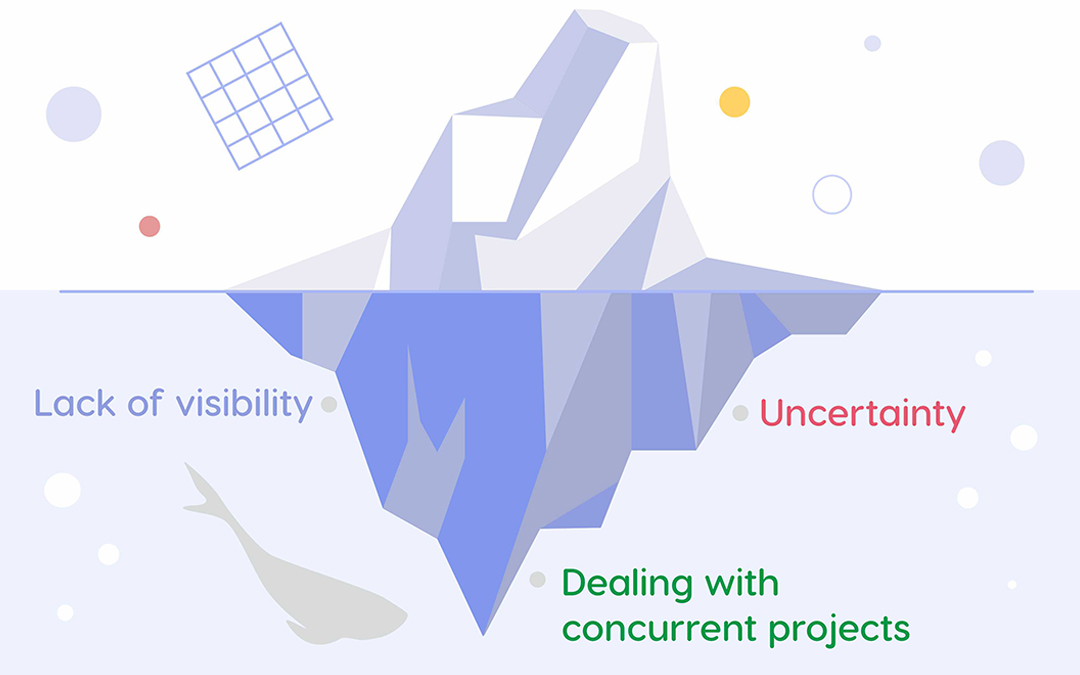Resource availability is a critical component of effective resource allocation: you need this data to assign the right people to the right task for timely and successful project delivery.
But despite its importance, resource availability data is not always centralized and easily accessible in organizations, which creates hurdles for effective project planning and resource allocation.
In this article, we’re explaining why knowing resource availability is so essential for project and resource management, and how to make sure that availability data is always at your fingertips.
Resource availability: Essence and significance
Resource availability provides project/resource managers with insight into what resources are available to be assigned to a project, when, and under what conditions. It refers not only to employees but also to material resources (tools, equipment, facilities) if they are needed for project completion — if you don’t take their availability into account, the team will likely fail to finish the required work on time.
Resource availability goes hand in hand with resource demand which is the number of resources required to deliver a project. If there are no available employees to fulfill the resource demand, a resource manager should find ways to bridge this gap to prevent team members from overallocation.
Therefore, understanding resource availability helps plan and staff projects with the right resources at the right time. Let’s consider the other reasons to track resource availability.
6 reasons to be aware of your resources’ availability
Having a full picture of resource availability can provide you with the following benefits.
- It facilitates making effective resource allocation decisions.
When you have relevant availability data at hand, it’s much easier to decide who can be assigned to a required piece of work. In addition, it helps make decisions regarding the start of a new project: if you see that there are no available employees for it, you can postpone it or think of other ways to meet the resource demand.
- It reduces the probability of resource conflicts.
If you have a clear idea of available resources across the enterprise, there are fewer chances to assign the same person to concurrent tasks.
- It helps respond to changing requirements properly.
Availability data will provide project/resource managers with flexibility when changes need to be made. For example, if a client requests to deliver a project earlier or wants to increase the project scope, resource availability data will show whether you can meet the increased resource demand.
- It facilitates addressing unexpected issues.
As Murphy’s law runs, if anything can go wrong, it will. For example, you may need to replace a team member who has fallen ill or a piece of equipment that has gone out of order, so knowing who/what is available at the moment can help you address these resourcing issues.
- It makes it possible to set realistic expectations.
Resource availability directly impacts the output team members can produce and a project’s timeline. Therefore, a project manager can create a realistic plan, and clients and stakeholders will know what to expect.
- It helps prevent problems caused by resource unavailability.
If there are no available resources at the right time, it will result in project delay and cost overrun. As a result, the clients will be dissatisfied, which in turn will affect an organization’s reputation. [1]
Now that the significance of resource availability data is clear, let’s figure out what challenges you can come across when you need to match it to the resource demand.
The biggest resource availability challenges

Lack of visibility into resource availability data
When a company doesn’t use a centralized system that provides a comprehensive view of resource-related data and keeps it in spreadsheets instead, it can cause numerous challenges. For example, this data can be siloed and/or outdated, and using it in the resource allocation process can lead to problems as a result of assigning tasks to unavailable people. Also, if availability data is fragmented, it will take more time and effort to pile it together for the resource allocation process.
Uncertainty
When you plan a project and its resources, there’s always a degree of uncertainty – you cannot predict the unpredictable and forecast every possible scenario. Resource availability can be affected by various circumstances that are out of our control. But if you prepare for these possible events (e.g., set a buffer in a project plan, apply a flexible project management approach, etc.), unexpected resource unavailability won’t derail the project.
Read more: Fighting Uncertainty in Project Management: Arm Yourself With the Right Tool
Dealing with multiple concurrent projects
When you work in a multi-project environment, the above-mentioned resource availability issues redouble. First of all, resource conflicts are inevitable due to dependencies between projects and a shared pool of resources. Second, because project/resource managers have to deal with large volumes of fragmented data – it can be really challenging to figure out team members’ availability quickly enough.
To address these challenges and keep control of resource availability data, you’ll need the assistance of a resource management solution. Let’s examine its capabilities in more detail.
Getting a grip on resource availability: How a resource management solution helps
We’ll review the example of Epicflow to illustrate how an effective resource management tool can ensure that your resource availability data is always at your fingertips and helps you allocate and manage all kinds of resources efficiently.
Epicflow is a resource management solution that has been specifically developed for managing multiple projects and their shared resources. Its resource management features provide project and resource managers with comprehensive support from resource allocation to making the right management decisions. Here are its main capabilities that help manage resource availability issues.
Providing a bird’s eye view of the data required for resource allocation
In a multi-project setting, it can be really challenging to quickly find the right person to complete the task, especially when the data required for resource allocation is siloed. Epicflow can solve this problem – its Competence Management feature provides a project/resource manager with all the data required for assigning the right team members to the tasks: competences, availability, and capacity. And what is more, Epicflow can suggest an employee who matches a task in all the above-mentioned parameters, which makes resource allocation super easy and effective.
It’s also worth mentioning that Epicflow integrates with human resource management systems that keep track of employees’ availability and capacity. Thanks to such an integration, you can be sure that resource availability data provided by Epicflow is never outdated.
Managing material resources
As we’ve mentioned earlier, the availability of material resources is no less important for ensuring timely project completion. Here are Epicflow’s capabilities enabling material resources’ management:
- If a project requires the use of materials (e.g., steel, wood), you can keep track of their consumption as well as review other related information (price, risk factor, etc.);
- You can create a Unit Pool – a resource category that helps manage equipment – and specify its capacity and availability as well as assign it to corresponding project tasks.
Helping address availability issues
In a multi-project environment, where all projects are interrelated and interdependent, making decisions is tough, because it’s difficult to predict exactly what effect these changes will have. So, when you have to address a challenge (e.g., a critical resource is unavailable when needed) or make other decisions under conditions of uncertainty, you can run simulations in the What-if Analysis mode and see how your actions will affect the workflow. For example, what will happen if you move a milestone or assign extra resources from the other group? As a result of such an analysis, you’ll be able to come up with the most reasonable decision.
Therefore, Epicflow is an integrated system that helps keep track of all resource-related data and enables effective management of all kinds of resources involved in project work. Schedule a call with our expert to learn how wise resource management can take your business to the next level.
References
- Managing Resource Availability: A Definitive Guide. Retrieved from: https://www.indeed.com/career-advice/career-development/resource-availability

